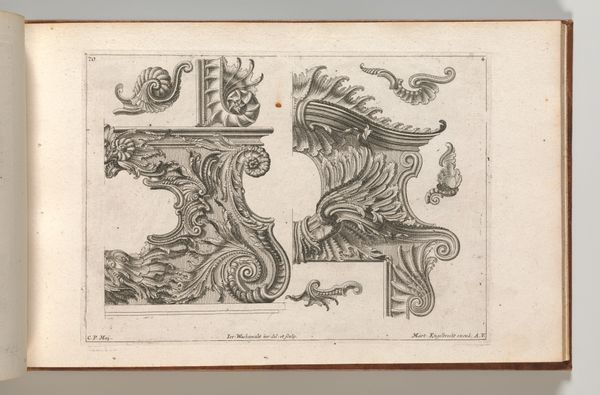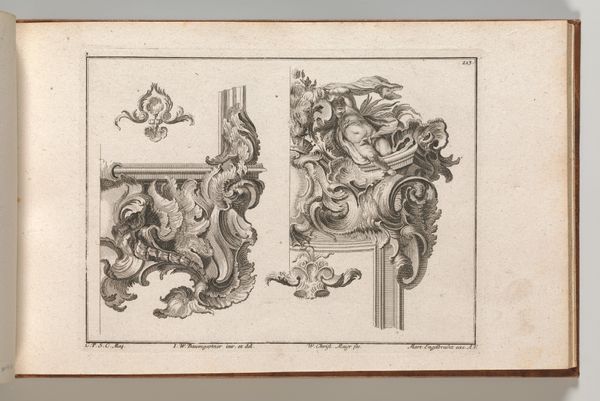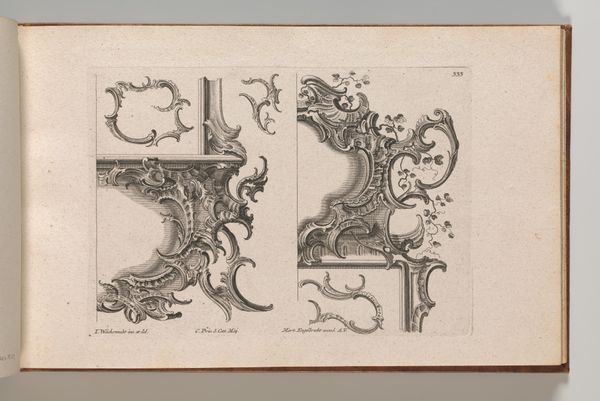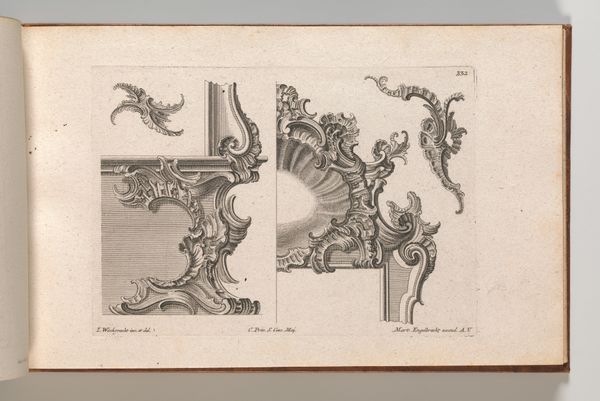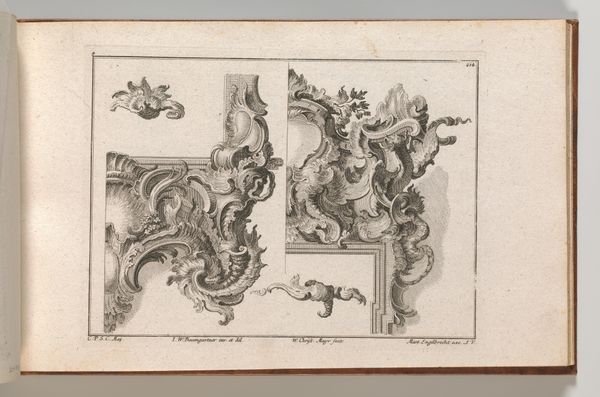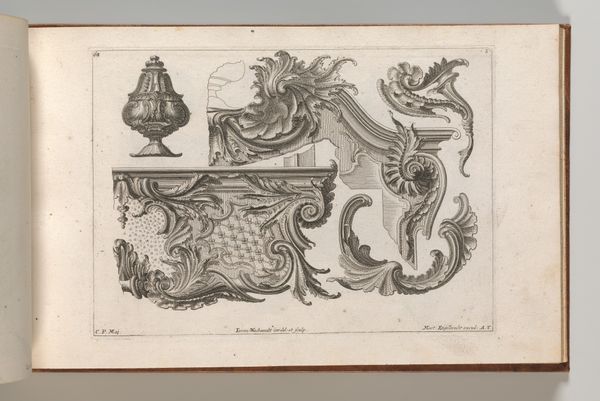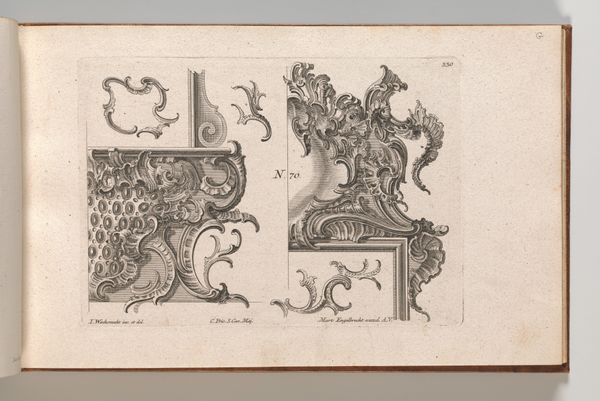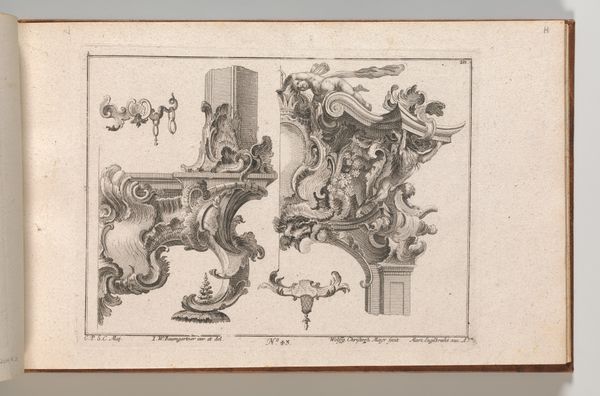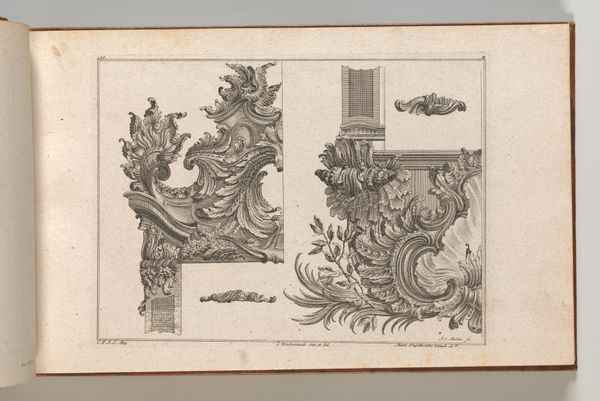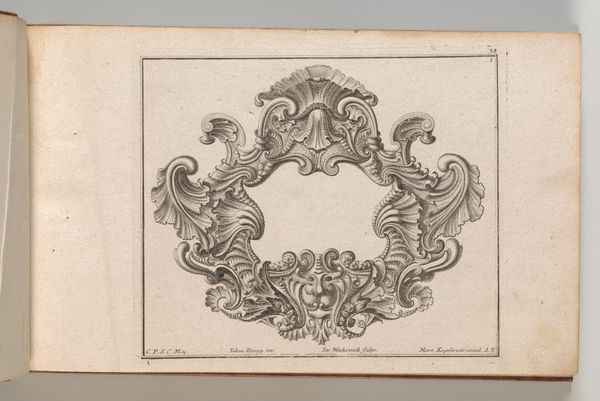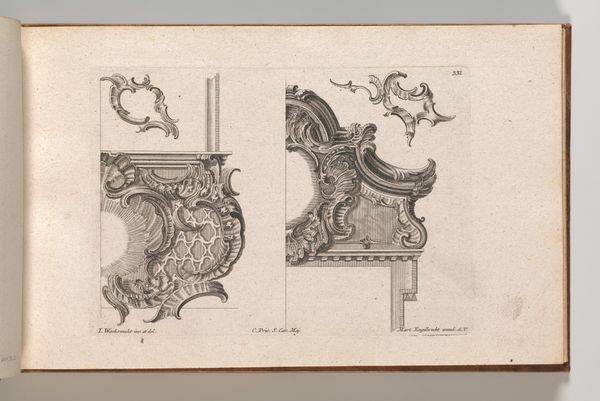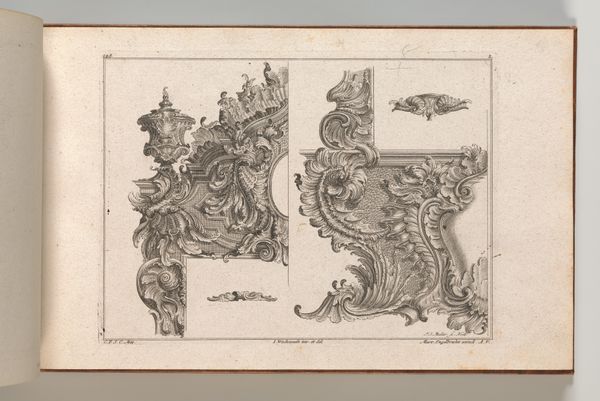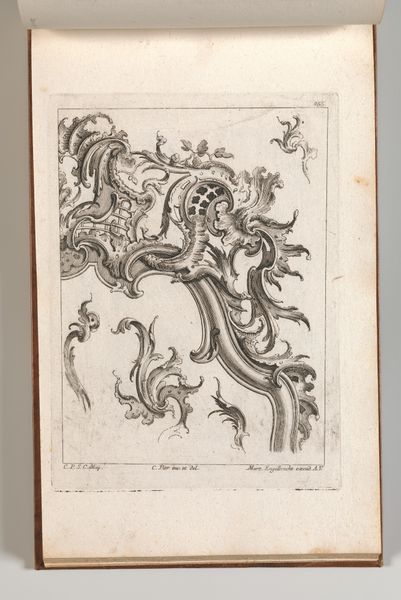
Suggestion for the Decoration of the Lower and Top Right of a Frame Combined with Several Additional Ornaments, Plate 3 from: 'Unterschidliche Auszierungen zu Thüren und Fenster, etc. etc. sehr nutzlich zu gebrauchen' 1745 - 1755
0:00
0:00
drawing, print, engraving
#
drawing
#
baroque
# print
#
decorative-art
#
engraving
Dimensions: Overall: 8 7/16 × 13 3/4 in. (21.5 × 35 cm)
Copyright: Public Domain
Curator: This engraving from the mid-18th century is titled, "Suggestion for the Decoration of the Lower and Top Right of a Frame Combined with Several Additional Ornaments." It’s attributed to Jeremias Wachsmuth and comes to us from the Metropolitan Museum. What's grabbing you as you look at it? Editor: You know, it's interesting. At first glance, it looks kind of... uptight? All those curls and leaves, meticulously rendered. But then you start to see this underlying playfulness, like the artist is winking at the very idea of ornate decoration. Curator: Absolutely, and within a broader historical frame, these ornamental prints gained popularity as democratization movements across Europe prompted changes to traditional patronage and, of course, traditional means of production. We could say they operate at the intersection of production, capital, and shifting class dynamics. Editor: Wow, I didn't think I'd get a sociology lesson today. I'm just picturing someone, maybe a stressed-out carpenter, squinting at this thing, trying to figure out how to carve all those leafy bits. It's like a Baroque anxiety dream. Curator: Precisely. Think about the status the deployment of such elaborate and expertly-crafted design motifs might communicate and for whom? Further, who historically was granted access to the means to achieve such display, and whom might this exclude? Editor: Well, there you go again. Exclusion is really at the heart of decorative art, isn’t it? I'm thinking about Marie Antoinette’s whole vibe right now. Curator: It raises fascinating questions about labor and artistry in the rococo period, as well. It's easy to see these designs as fussy, but each swirl and flourish likely demanded real skill to execute and came to be associated with real social standing. Editor: Looking closer, it's clear that even though the design looks imposing, the line work is delicate, almost fragile. Curator: Right, a precarity is expressed formally, which when considering social tensions within the frame of that particular moment, yields complex interpretations. Editor: You’ve certainly given me something to think about. I can't look at picture frames the same way now. Curator: Precisely. Now consider further how our engagement with this historic print informs current debates around wealth distribution today! Editor: Okay, maybe I need a little break from thinking after that. But seriously, thank you for pointing all that out.
Comments
No comments
Be the first to comment and join the conversation on the ultimate creative platform.
